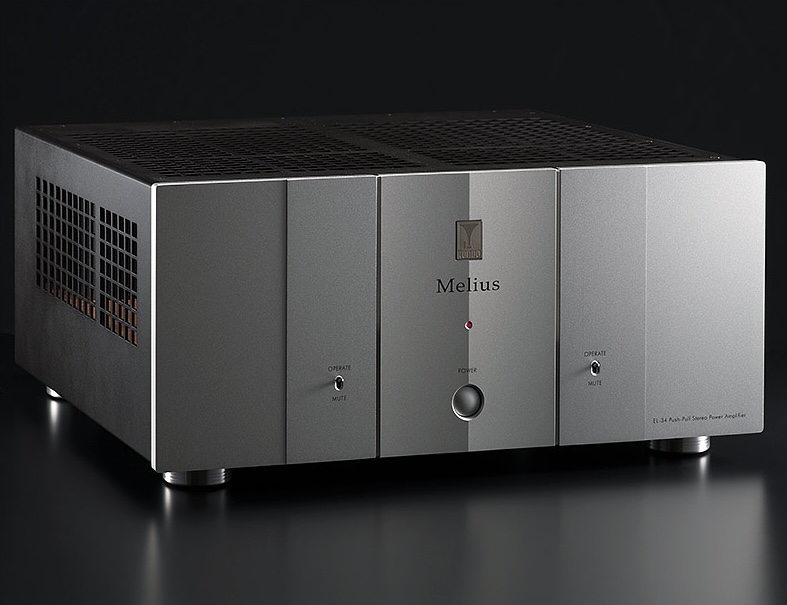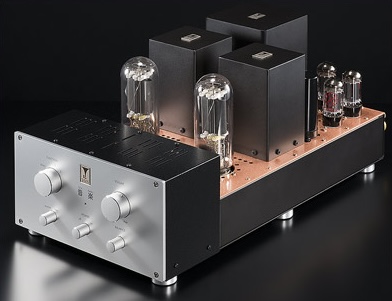Introduction
The 300B is arguably the most famous triode vacuum tube ever made. Introduced by Western Electric in 1938 for telephone signal amplification, it has since become a legend in the world of high-end audio.
300B tubes are renowned for their midrange quality. If you’ve ever heard a decent amplifier built around 300Bs, you already know how beautiful the midrange can be — organic, fluid, rich in texture, and harmonically saturated. Vocals, in particular, are often magical through these tubes. Maybe it’s because they were originally designed for voice transmission; who knows?
The EL34 is another iconic tube — a power pentode introduced by Mullard in 1955. Unlike the 300B, the EL34 was specifically designed for audio amplification. It, too, is celebrated for its midrange: warm, smooth, and inviting. Countless amplifiers have been built around EL34s, and they remain popular and sought after to this day.
What do these two tubes have in common? They’re often criticized for lacking slam and authority in the bass region. That’s the stereotype, at least. And there’s some justification for it — many amplifiers built with these tubes haven’t delivered great low-end performance.
But that leads to an important question: is the limitation in the tube itself, or in the design of the amplifier around it?
Engström Sound – Arne

Engström Sound is a Swedish hi-fi company that primarily produces tube amplifiers. The Arne is their integrated amplifier, featuring four 300B tubes in a push-pull configuration. While it’s considered their “entry-level” model, its sound is anything but entry-level.
During a casual visit to a good friend — who also happens to be the best hi-fi dealer in my country — he offered me a demo of the Arne. It was my first time hearing the Arne, or any Engström product for that matter. What followed was one of the most memorable hi-fi experiences of my life.
The amplifier was paired with Albedo speakers from Italy — low-sensitivity speakers, which are an unusual match for a tube amplifier. But as soon as the music started, I realized that this amp was anything but stereotypical.
Like many, I had my own biases against the 300B tube. This wasn’t my first encounter with it, but it was certainly an eye-opener. The first thing that struck me was the bass. Yes — the bass! It was fast, tight, textured, and deep. It had tonal accuracy and harmonic richness. These qualities are difficult to achieve even with high-end solid-state amplifiers — and here they were, delivered effortlessly by an amplifier built around 300B tubes.
I spent several minutes focusing solely on the bass, simply because I so rarely encounter this level of quality. The fact that it was coming from a 300B amp left me stunned. It took me a while to shake off the initial shock and recalibrate my brain. Once I did, I was finally able to take in the full sonic picture.
This amplifier delivers everything we love about 300B tubes, while also meeting — and exceeding — modern audiophile expectations. There’s no trace of “vintage tube sound” here. The highs are magical, the midrange is fluid and rich, and the bass — yes, again — is astonishing. As expected, vocals are rendered beautifully. The soundstage is expansive, with excellent imaging and instrument separation.
But the most important quality of this amplifier — and in my opinion, where it outshines many others — is its ability to convey emotion. I’ve never encountered another amplifier that connects so directly to the emotional core of music.
I played “Bach: Sonatas for Violin & Keyboard Nos. 3–6” by Renaud Capuçon and David Fray. The album begins with a sustained violin note — and from that very first tone, I burst into tears, completely overwhelmed. I’m a long-time David Fray fan and have listened to this album countless times. But this time, I couldn’t contain my emotions. The Arne draws you into the music so deeply that once you’re in, it’s an emotional rollercoaster — with the musicians themselves at the helm.
After I returned home, I carried the magic of the Arne with me. Since I already own a fantastic amplifier — the Kondo ONGAKU (you can read more about it in this post) — I managed to resist the temptation to buy the Arne for myself. But I couldn’t stop talking about the experience. I shared it enthusiastically with my hi-fi buddies and, most importantly, with my best friend.
He and I started this journey together decades ago — true partners in crime. After hearing my detailed impressions and excitement, he decided to purchase the Arne. I was thrilled. Not just for him, but also because it meant the amplifier would be nearby, and I could listen to it whenever I wanted.
He owns the same speakers I do — the Blumenhofer Acoustics Corona 4x180s (I’ve written about them here). The synergy between the Arne and these speakers is exceptional, and he’s been enjoying the combination ever since.
At some point, he shared a fun anecdote with me. We have a bit of a raving past — and although we don’t listen to electronic music like we used to, nostalgia occasionally kicks in. One day, he played electronic music for hours at full volume. The Arne didn’t even flinch. It delivered pant-flapping bass without breaking a sweat — from a 300B tube amplifier, no less. Remarkable.
After all these experiences, and after spending plenty of time with the Arne, I’ve come to a firm conclusion: the stereotypes about 300B tubes are simply not accurate. It’s not the tube’s fault — it’s the design limitations of many amplifiers that gave rise to those clichés. Engström Sound proves that it’s entirely possible to build a 300B amplifier with zero compromises in any part of the sonic spectrum.
Kondo Audio Note – Melius

The Melius is Kondo’s EL34-based push-pull power amplifier. Full disclosure: I own Kondo gear, and I love the brand. I may be biased, but I’ll do my best to stay objective and let the experience speak for itself.
One of my closest hi-fi friends owns the Melius, and I’ve spent a great deal of time listening to it — both at his place and in my own system, where I had the amp for a couple of weeks. This amplifier initially came to his home for an audition, and we were both there to test it.
We were already familiar with the typical sound of EL34 tubes — and admittedly, we carried our own set of assumptions about their limitations. At the same time, we knew what Kondo is capable of, and we were deeply curious about what they had achieved with this tube.
I vividly remember the moment we played the first track. The sound was immediately familiar — not in a generic sense, but in that unmistakable Kondo way. If you know Kondo gear, you’ll recognize the sonic signature right away: balance, purity, and coherence across the spectrum.
Like every Kondo component I’ve heard or owned, the Melius is incredibly balanced. Nothing stands out unnaturally. There’s no forwardness, no hollowness — just a seamless, coherent presentation. Dynamics are stunning — both macro and micro — and the amplifier has remarkable speed. It’s lively, immediate, and refined all at once.
Crucially, the Melius sounds nothing like the stereotypical EL34 amplifier. The classic midrange magic is there — warm, smooth, and intimate — but what was truly astonishing was that this smoothness came without the usual drawbacks. In fact, quite the opposite — detail retrieval was top-tier, and the presentation remained precise and articulate.
Bass was another revelation. It was tight, textured, and fast — full of energy and nuance. The highs had ample air and sparkle, never straying into harshness, yet never sounding veiled or soft either.
Listening to the Melius was an eye-opening experience. It marked a milestone in my hi-fi journey — a moment when another long-held belief, about the limitations of the EL34 tube, was gracefully dismantled by brilliant design.
Final Verdict
Whether it’s the 300B-based Arne or the EL34-powered Melius, these amplifiers have proven to me that the stereotypes surrounding these tubes are the result of sub-par designs — not the tubes themselves. In the hands of true masters, these tubes can deliver a perfectly balanced, uncompromised performance.
While circuit topologies may not have evolved drastically in recent years, the quality of components has improved significantly over the past few decades. More importantly, manufacturers like Engström Sound and Kondo have perfected the art of output transformer design — a cornerstone of any tube amplifier’s performance.
Yes, tubes come with their own set of challenges. They require maintenance, and the tubes themselves are consumable. They’re also not the final word in low noise. But when implemented with care, they can surpass even the finest solid-state designs in the areas that matter most to the soul of music: musicality, fluidity, timbre, and harmonic richness.
That’s why, more than a century after their invention, tubes are still with us — and they’re not going anywhere anytime soon.
If you’ve ever dismissed the 300B or EL34 based on reputation alone, these amplifiers might just change your mind — as they did mine.
